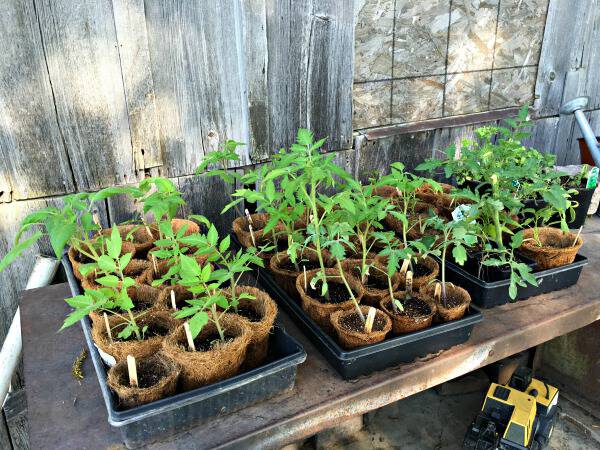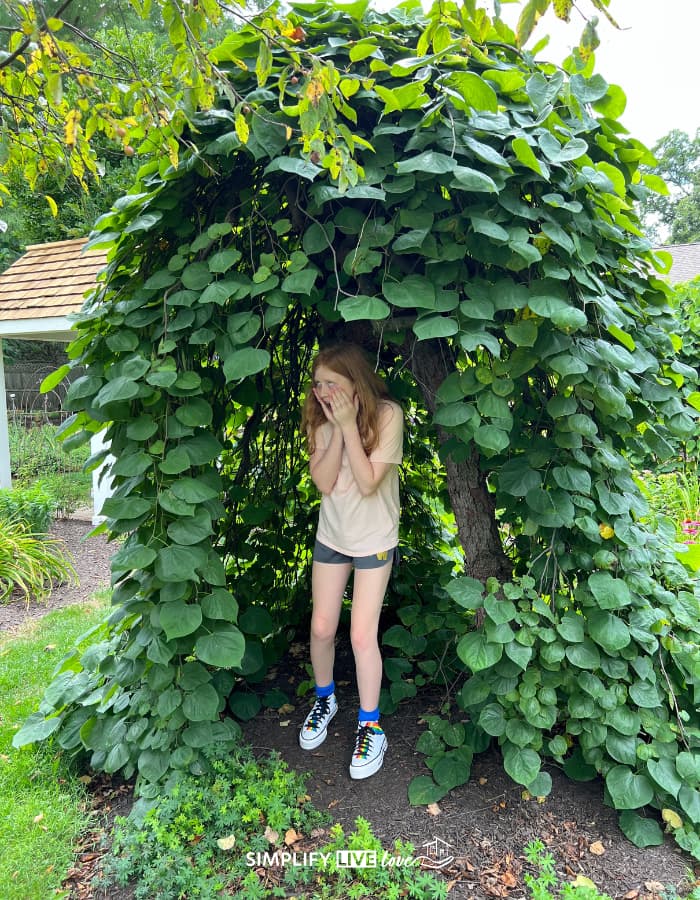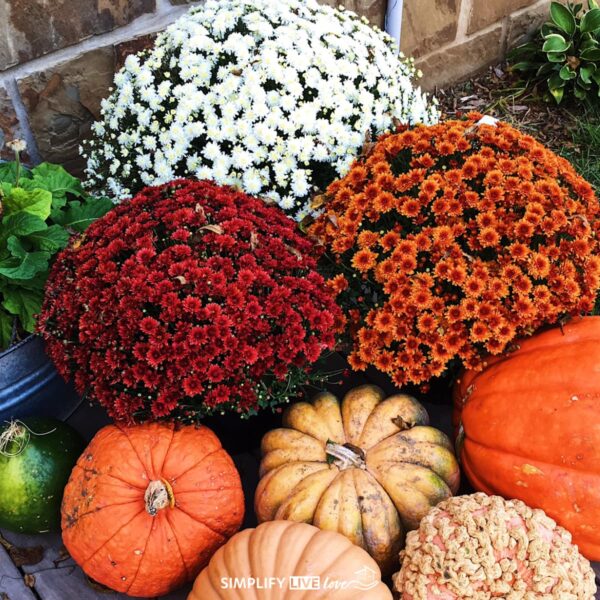The Pre-Planning Checklist: 8 Things to Know Before You Plan a Garden
on Apr 04, 2025
This post may contain affiliate links. Please read our disclosure policy.
Here are eight essential things you need to know before you plan a garden to keep your garden productive and easy to maintain. Through plenty of trial and error over the last 15 years, I’ve learned what really works.

Quick Summary
Planning a garden requires understanding your environment, available resources, and seasonal timing. Success comes from preparation, not just planting seeds.
🌱 Know your growing zone and frost dates to select appropriate plants
🌡️ Understand which plants can be planted before/after frost dates
🛠️ Consider accessibility and garden layout for easier maintenance
🌞 Have a plan for mulch
🧠 Keep garden records to learn and improve each season
Ready to create a thriving garden? Read the entire article for detailed guidance on each essential planning step!
Table of Contents
- Quick Summary
- 1. Determine Your Growing Zone to Properly Plan a Garden
- 2. Understanding Seasonal Planting Windows When You Plan a Garden
- 3. Consider Your Garden’s Accessibility Needs
- 4. Have a Plan for Mulch
- 5. Plan Your Water Sources When You Plan a Garden
- 6. Choose Appropriate Plants When You Plan a Garden
- 7. Establish a Record-Keeping System as You Plan a Garden
- 8. Consider Vertical Space and Structures
- Conclusion: Pre-Planning Helps You Successfully Plan a Garden
1. Determine Your Growing Zone to Properly Plan a Garden
Start by identifying your specific growing zone before you plan a garden. I garden in zone 5b in Eastern Iowa with a frost-free date of May 15th and it’s imperative that you know your garden zone too. Your hardiness zone determines:
- When to plant different vegetables
- Which plants will thrive in your area
- How long your growing season lasts
- When to start seeds indoors
Find your growing zone through the USDA Hardiness Zone Map, your first and last frost dates, and incorporate this information when you plan a garden for optimal success.

2. Understanding Seasonal Planting Windows When You Plan a Garden
One of the most important aspects to consider when you plan a garden is understanding which plants can handle cold temperatures and which need warm soil to thrive.
Cold-Hardy Plants to Plant Before Last Frost Date
When you plan a garden, identify crops that can be planted before your last frost date:
- Root vegetables: Carrots, beets, radishes, turnips, and parsnips can be direct-sown 4-6 weeks before the last frost
- Leafy greens: Spinach, kale, arugula, and lettuce tolerate light frost and can be planted 3-5 weeks before last frost
- Brassicas: Broccoli, cauliflower, and cabbage transplants can go in the ground 2-4 weeks before last frost
- Peas: Direct-sow 4-6 weeks before last frost for best production
- Onion family: Onions, leeks, and shallots can be planted 4-6 weeks before last frost
My Iowa garden gets a head start each year with cold-hardy plantings in late March and early April, well before our mid-May frost-free date.
Warm-Season Plants that Require Patience
When you plan a garden, reserve space for these warm-weather lovers that must wait until after the last frost:
- Nightshades: Tomatoes, peppers, and eggplants need soil temperatures above 60°F
- Cucurbits: Cucumbers, squash, melons, and pumpkins will rot in cold soil
- Beans: Both bush and pole varieties need warm soil to germinate
- Corn: Requires soil temperatures of at least 60°F
- Sweet potatoes: Need very warm soil (70°F+) and a long growing season
I’ve learned through experience to be patient with these crops, regardless of how nice the weather seems in early spring. One late frost can destroy weeks of growth.
Creating a Seasonal Planting Calendar
As you plan a garden, create a personalized planting calendar based on your frost dates:
- Use your last spring frost date as the anchor point
- Count backward for cold-hardy plant planting dates
- Count forward for warm-season plant planting dates
- Include dates for succession plantings of short-season crops
- Note fall planting dates based on first frost expectations
My garden planning always includes a detailed calendar with planting dates for each crop, which has dramatically improved my garden’s productivity.
Download my free planting schedule by becoming an email subscriber!
3. Consider Your Garden’s Accessibility Needs
As you plan a garden, think about accessibility for both maintenance and harvesting. After struggling with a too-wide garden bed, I redesigned my layout for better reach.
Accessibility factors when you plan a garden:
- Maximum comfortable reaching distance (typically 2-3 feet)
- Path width requirements (minimum 2 feet for comfortable access)
- Tool storage proximity
- Resting areas and shade
- Ergonomic considerations for different abilities
- Height of beds or containers for reduced bending
Raised garden beds offer an easy way to improve accessibility and can transform your outdoor space. They’re particularly helpful for beginner gardeners and those with physical limitations.

4. Have a Plan for Mulch
When you plan a garden, don’t overlook the importance of mulch. A good mulching strategy improves soil health, reduces weeding time, and helps maintain consistent soil moisture. My Iowa garden thrives with strategic mulching.
Consider these mulch options when you plan a garden:
- Organic mulches: Straw, leaves, grass clippings, and compost break down over time and add nutrients to your soil
- Wood chips: Excellent for paths and perennial beds, but avoid fresh chips directly around vegetables
- Living mulches: Low-growing plants like clover that suppress weeds while adding nitrogen
- Paper or cardboard: Great first layer beneath other mulches for suppressing stubborn weeds
- Plastic or landscape fabric: Consider for certain crops like melons, squash, or strawberries
Apply mulch after soil has warmed in spring to avoid delaying plant growth. Keep mulch 1-2 inches away from plant stems to prevent rot issues. Plan to apply 2-4 inches of organic mulch, replenishing as it breaks down throughout the season.
In my garden, I use different mulch types for different areas: straw for vegetable beds, wood chips for paths, and living clover mulch around fruit trees. This targeted approach maximizes benefits while minimizing costs. When you plan a garden with mulch in mind, you’ll save countless hours of weeding and watering throughout the growing season.
Related reading: How to Get the Best Garden Mulch for Free
Pin this now to find it later
Pin It5. Plan Your Water Sources When You Plan a Garden
Establish reliable water sources before you plan a garden. My garden includes dedicated spigots and drip irrigation systems to minimize hand watering.
Water planning considerations as you plan a garden:
- Distance from water sources to garden beds
- Water pressure and flow rate
- Irrigation options (drip, soaker hoses, sprinklers)
- Rainwater collection possibilities
- Water conservation strategies
- Mulching plans to retain moisture
Related reading: 5 Genius Tips to Make Garden and Plant Watering More Eco-Friendly
6. Choose Appropriate Plants When You Plan a Garden
Grow what you’ll eat and what grows well in your region. As you plan a garden, consider:
- Family food preferences
- Varieties suited to your climate
- Space requirements for mature plants
- Days to maturity versus growing season length
- Disease-resistant varieties for common local problems
- Beginner-friendly versus challenging plants
Balance quick-growing crops with long-season vegetables as you plan a garden for continuous harvests.
Include native plants to support local ecosystems and cut flowers for beauty. Creating a kitchen garden near your home makes harvesting convenient for daily meals.

7. Establish a Record-Keeping System as You Plan a Garden
Create a simple system to track successes and failures when you plan a garden. Your future self will thank you for this valuable information in the following year. You system doesn’t have to be fancy.
Record as you plan a garden and throughout the growing season:
- Garden layout and plant locations
- Planting dates
- Varieties grown
- First harvest dates
- Productivity notes
- Disease and pest observations
- Weather conditions
- What worked and what didn’t

Take photos of your garden throughout the season from the same spots to visually track progress. These records become the starting point for next year’s planning.
Key soil considerations when you plan a garden include:
- Soil type (clay, sand, loam, or a combination)
- pH level
- Nutrient content
- Organic matter percentage
- Drainage capabilities
Watch your yard after rain to identify drainage patterns as you plan a garden and avoid planting in areas where water collects.

8. Consider Vertical Space and Structures
As you plan a garden, incorporate vertical growing space. My trellis systems doubled my growing area and improved air circulation for vine crops. Vertical growing is perfect for small spaces.
Vertical considerations when you plan a garden:
- Appropriate support structures for climbing plants
- Natural light impact of vertical elements
- Wind resistance requirements
- Crop suitability for vertical growing
- Space-saving techniques for small gardens
- Season extension possibilities with vertical structures
Adding a trellis or archway can also serve as a focal point in your beautiful garden.
Conclusion: Pre-Planning Helps You Successfully Plan a Garden
Complete this checklist before breaking ground, and you’ll avoid many common gardening frustrations. My garden plans evolve yearly as I learn what works for our family and climate.
Remember that when you plan a garden, even imperfect plans can yield abundant harvests. Whether you’re creating your first garden, a square foot garden, a vegetable garden, or a dream garden, thoughtful planning sets you up for success. The joy of growing your own food makes the planning effort worthwhile. Happy garden planning!













I love your gardening plan! Can’t wait to learn to grow my veggies better this year!
All of these garden posts are wanting me to start planning mine! I have an idea of what I am going to do, but now I’m thinking I need to add more variety. I like the new approach to the blog hop. Good luck with your garden!
Your frost cycle is more demanding than ours. We have years where mid May is the time we finally achieve planting success due to late frosts and heavy rain. We also have many years like this when Presidents Day is our yardstick for safe planting. We love those longer seasons!
Great post on your garden plan! And helpful advice on companion planting and crop rotation. Dave has found crop rotation and companion planting so helpful! He tries really hard to do a garden plan each year. Has to fine tune it a bit. Lol, He keeps thinking he’ll remember what he plants where….leads to some mystery crops sometimes. Did I mention he often forgets to label his rows?
You always amaze me with the size of your vegetable garden, Michelle! These tips are perfect 🙂
I love your garden plan so simple and easy to make. It just goes to show a simple plan can be the best plan. My garden plan often looks like yours just quite a bit smaller since we have a small backyard garden.
I would love to have a bigger garden like yours if we only had the space. But I do keep slowly extending my gardening space with more raised beds. We just have 165 square foot garden but it’s amazing at home much you can grow in a little space.
Some great tips and ideas here! Definitely recommending your post to my sister. She just started her first garden and I’m sure she’ll be very glad to have your suggestions on mind. Thank you for sharing this nice info! Happy gardening!
I’m so happy spring has come early this year! I completely agree with you when it comes to companion planting. Has made a big difference in my vegetable garden. It not only helps, but I find it makes the garden look so pretty mixing flowers, herbs & food! I do the same thing and make a plan as well. It allows me to visualize things so much better, I take it with me when I go plant shopping too! I’ve been trying to get better when it comes to rotating my veggie plants. I just hate it when you seem to find the perfect spot! I’m getting better though. Your tips are wonderful and I’m so excited to watch your garden grow!
Hey Michelle,
You’ve just shared such an amazing post. Thanks so much for the spring garden tips. This will helps a lot for planning my garden on spring season.
Cheers,
Oliver